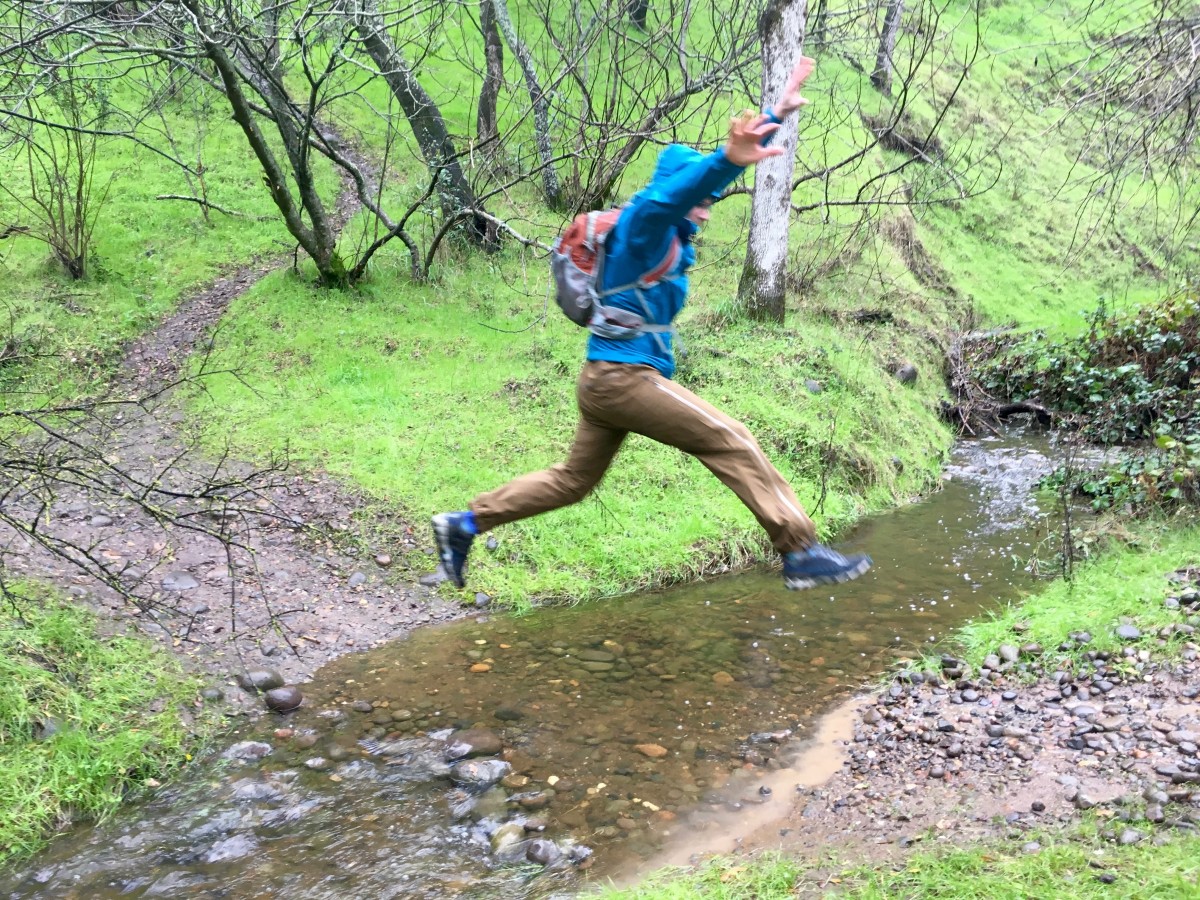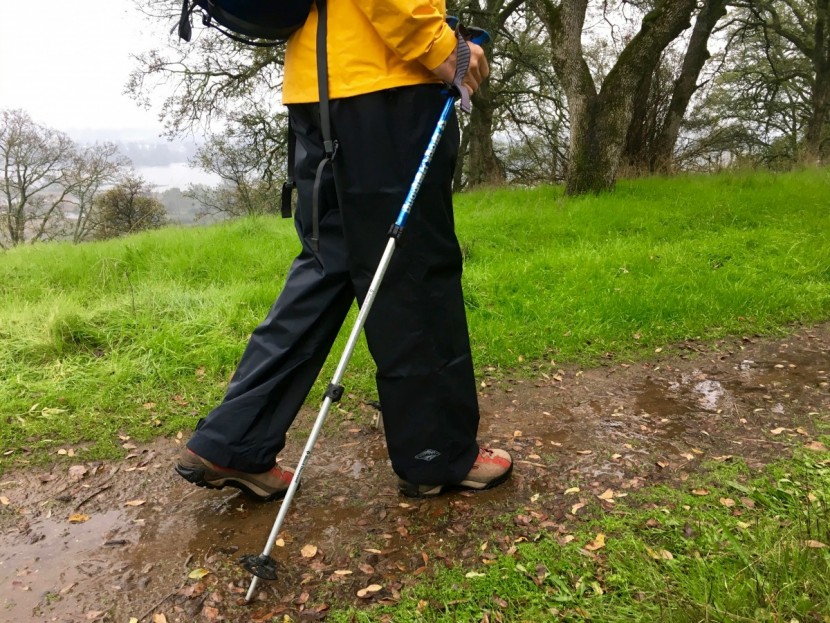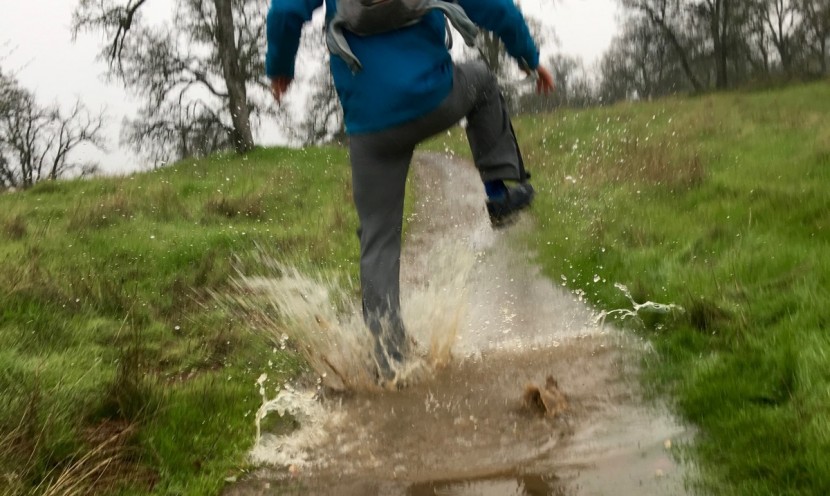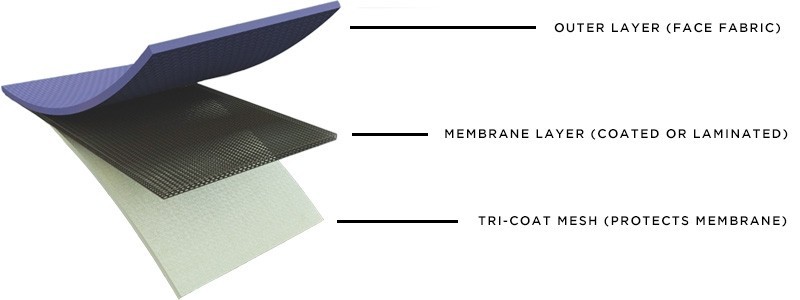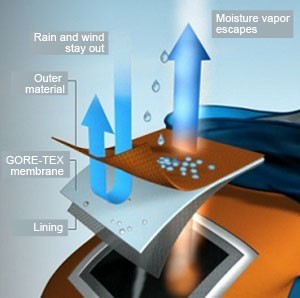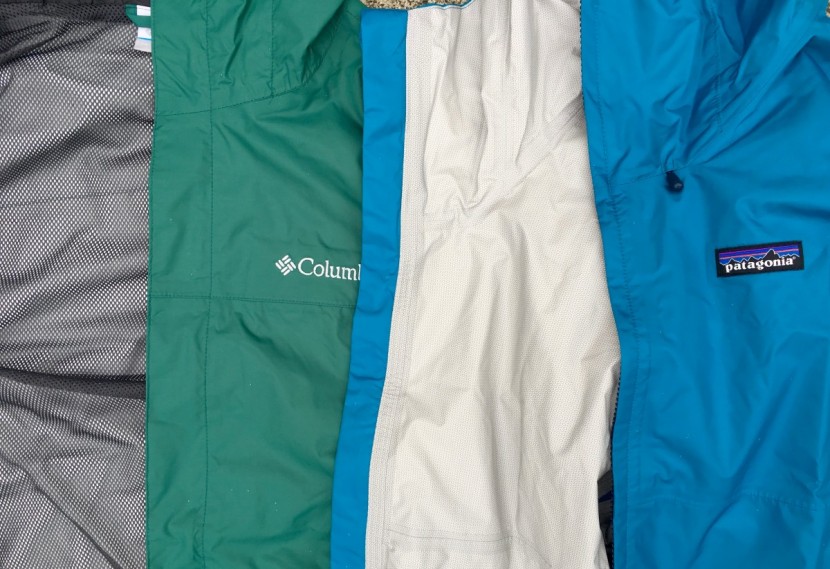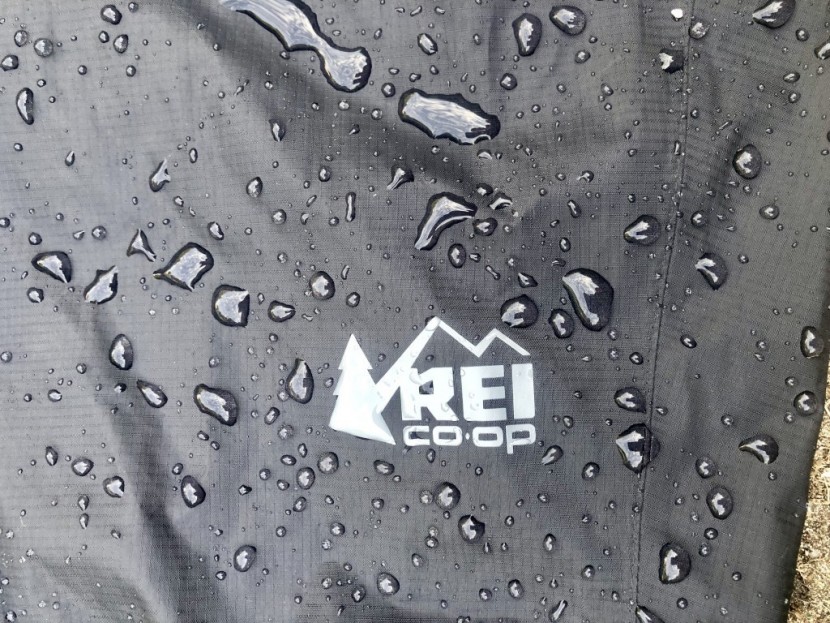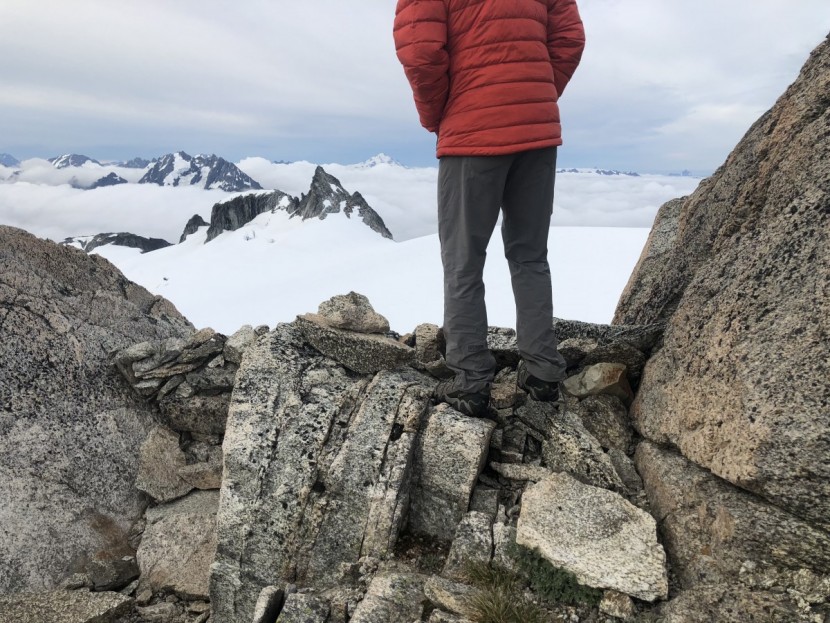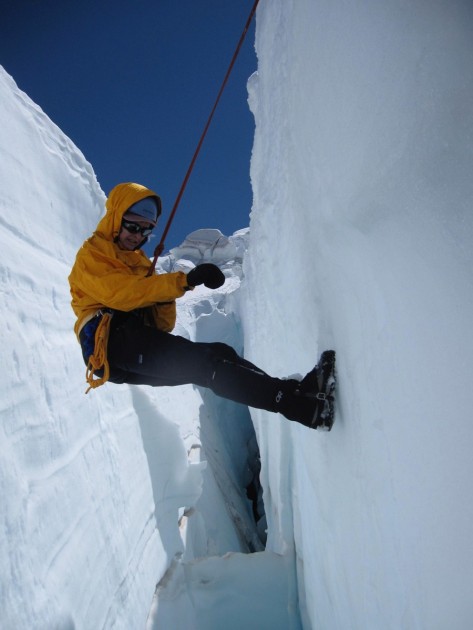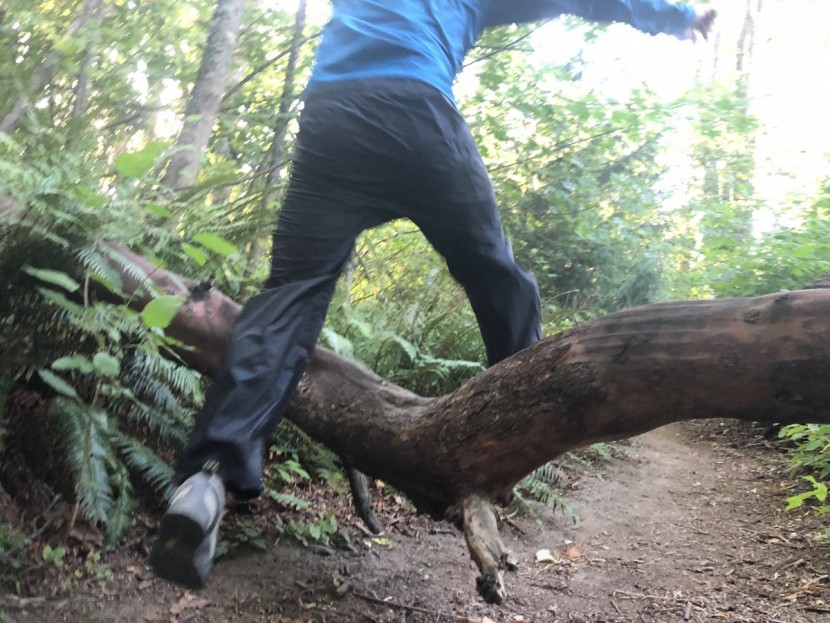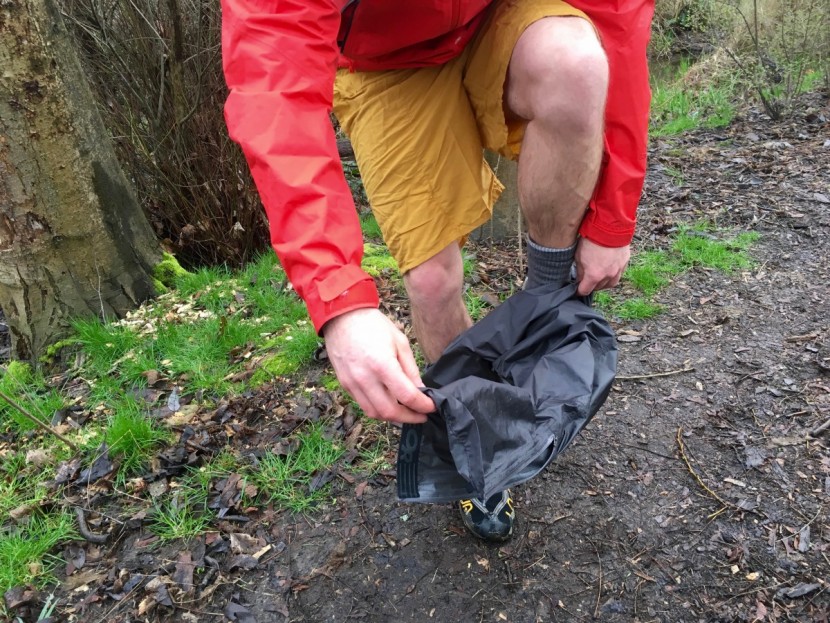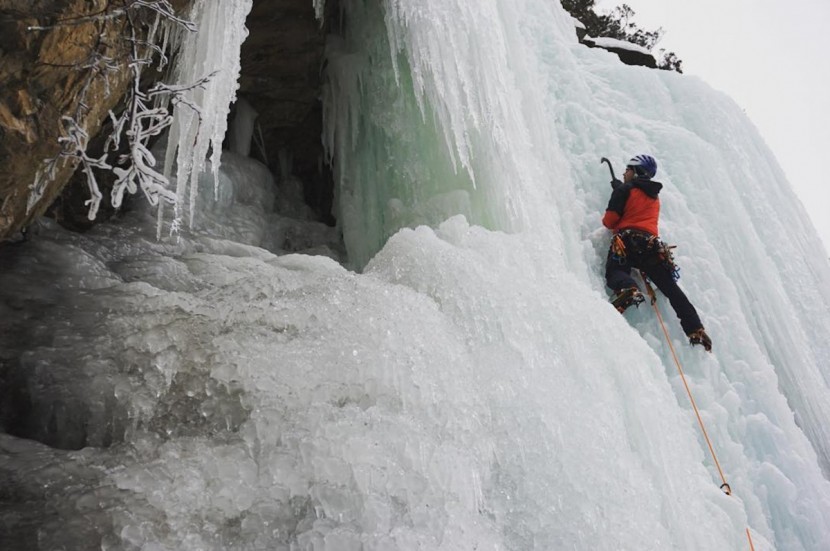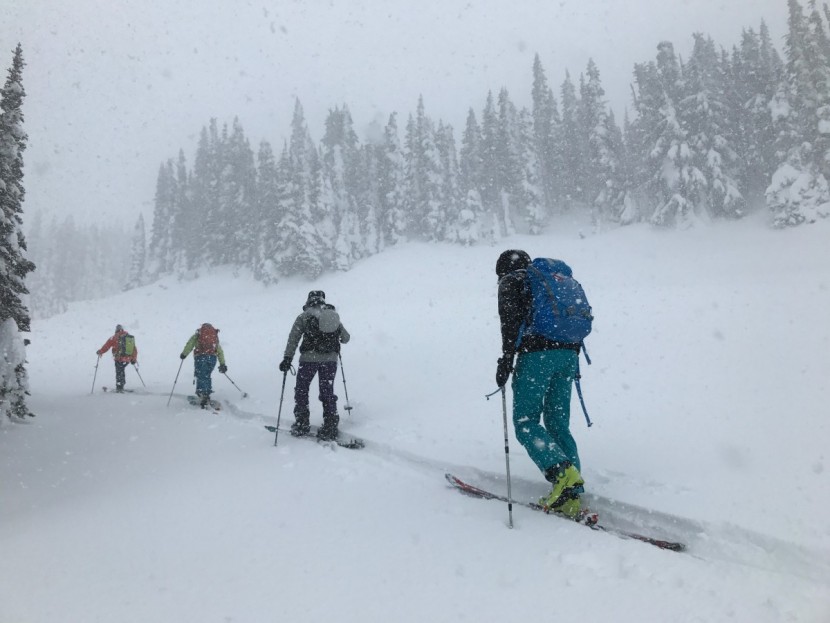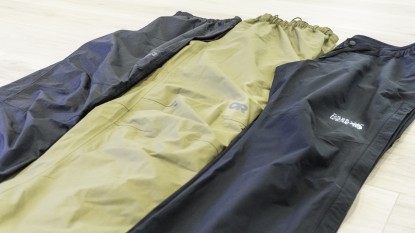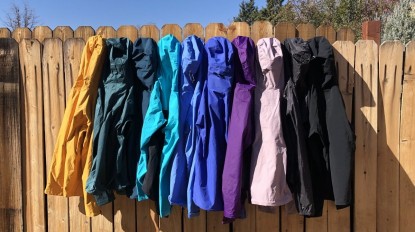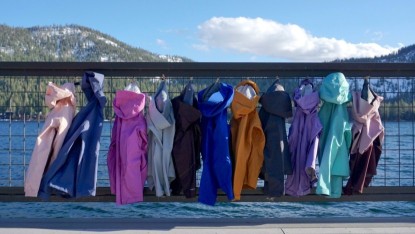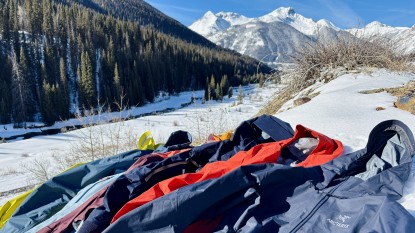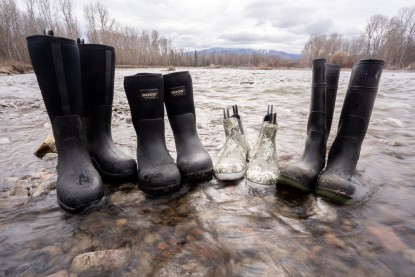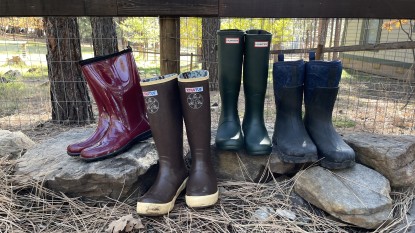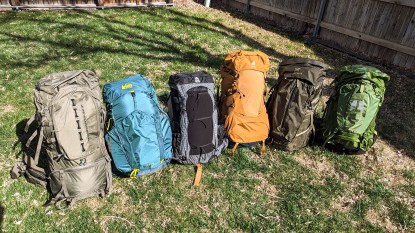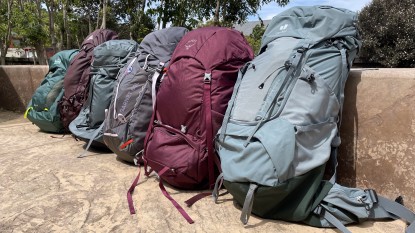A pair of pants that keep you dry when the skies open up is one of the earliest pieces of outdoor equipment that an aspiring outdoor enthusiast can purchase. The primary reason for this waterproof layer is to keep its wearer dry for hours, and potentially days on end, should a storm roll in or the wind starts to howl. The models we reviewed span from our favorite budget-oriented weather protection to the best-of-the-best higher-end models. We've also included lightweight, compact models for climbing, long-distance backpacking, and trail running. Whether you are searching for your first pair of shell pants, a modern replacement, an old favorite, or an ultralight pair to add to your quiver, we've found something for you.
Waterproof Breathable Fabrics 101
There is a lot of challenging terminology when it comes to waterproof/breathable fabrics, and it can be difficult to determine which construction method is best for you. The following information is basic yet valuable information that will aid in making an educated purchase.
Construction 101: 2, 2.5, and 3-layer Fabrics
If you read about waterproof breathable fabrics or rainwear in general, you may have heard that they can be constructed using 2, 2.5, and 3-layer designs, with each offering their own subtle advantages. Most rain pants we tested use 2.5 or 3-layer designs, even if they all look like a single layer of fabric when you grab them off the rack at the store. You might wonder why it looks like one layer, even if it's labeled as 2.5 or 3; this is because the layers are tightly bonded together to function as one. This is true of both 2.5 or 3-layer designs (appearing as one layer), with 2-layer designs featuring an interior hanging mesh of some kind.
Regardless if it's a 2, 2.5, or 3-layer material, these designs multilayered fabrics share the majority of their construction qualities. The primary difference comes on the innermost side of the garment. Similarities start with all three design styles, which feature an outer shell fabric, commonly referred to as a face fabric. This face fabric is coated with a chemical Durable Water Repellent finish, also known as DWR. DWR helps keep the exterior layer from absorbing water.
Then middle or “Second layer” is the actual waterproof layer, whether that be Gore-Tex, a proprietary laminated membrane, or even a coated membrane (not to be confused with a DWR coating). Regardless of the design or the number of layers, the waterproof layer is universally placed beneath the outermost layer, which again is termed the face fabric layer. To be clear, when you look at a jacket, you do not see the actual waterproof layer from the outside, as you are looking at the face fabric. The third and innermost layer is where the vast majority of differences in terminology come from when we compare layered fabrics.
3-Layer Fabrics
All 3-layer waterproof breathable fabrics feature an exterior face fabric treated with a DWR - a waterproof breathable membrane of some kind in the middle - and a super-thin polyurethane (PU) film or another similar backing on the inside facing part of the pant.
tThe disadvantage of three-layer garments is they are not always as breathable, as there are more layers for your sweat to pass through. Pants made with three-layer materials are often heavier than many of their 2.5 layer counterparts.
2.5 Layer Fabrics
Models that use a 2.5 layer construction look extremely similar to those that feature a three-layer design, with the possible exception of them feeling slightly lighter. 2.5-layer pants still have the same outermost, face fabric with a DWR treatment, minimizing how much water is absorbed to the outside. There is also still the same “middle” waterproof fabric (Gore-tex, eVent, etc.).
Here is where 2.5 layer fabric differs from 3-layer ones. On the inside of 2.5-layer pants, there is an EXCEPTIONALLY thin polyurethane laminate or similar another coating that is placed on the inside of the garment to help protect this layer from grime, sweat, or other oils that could clog the waterproof membranes' pores. This painted on layer is just much much thinner than what is featured on most 3-layer garments.
2 Layer Fabrics
On the inside of 2-layer rainwear, there is a separate layer (In this case there actually appears to be two layers). These two layers are most frequently an inner loose mesh liner that hangs away from the shell and a waterproof layer/face fabric combination. We know this is somewhat confusing because there are actually 3-layers, it just looks like there is two. Regardless this mesh liner has the same purpose of helping to protect the membrane or coated material.
New wave exceptionA new, small exception to the rules listed above are new models using the latest version of Gore-Tex Paclite, which is called Paclite Plus. What will come of this new wave of outdoor gear jargon and a reduced number of layers? Who can be sure but rest assured that OGL will be sure to keep you in the loop.
What is Waterproof?
The simple answer to this question would be “any fabric that won't let water through”. The problem with this is water can have varying amounts of force. For example, concrete or steel can be cut by highly pressurized water, but despite this, nearly everyone would consider concrete waterproof. That is an extreme example but let's look at it in a more outdoor centric way. Rain from a severe storm coupled with hurricane-force winds can produce up to 10 PSI.
One manufacturer calculated that a 175-pound person creates around eight psi on their bum while sitting on wet ground and 16 psi on their knees while kneeling. While the outdoor recreation industry has no official standard, the US Military does and requires that fabric must be able to resist 25 PSI (or 16,700mm) to be considered waterproof. The outdoor industry has universally, though unofficially, taken up.
Durable Water Repellent or DWR
Durable Water Repellent (DWR) refers to the chemicals applied to rain pant fabrics. The DWR does not directly relate to the waterproof-breathable membrane or coated fabric on the inside of the jacket. DWR performance does directly relate the exterior material's ability to resist and bead up water. With DWR, the goal is to allow the external face fabric to keep from becoming saturated. If the face fabric becomes saturated, it consequently affects how a pair of rain pants can breathe. This could give the user a sensation of dampness in the saturated area as a direct result of reduced breathability. All waterproof fabrics feature some type of DWR but its also worth noting that some level of DWR is commonly seen on nearly every water-resistant textile, from insulated jackets to softshell pants.
Waterproof Breathable Insert Materials
Not all waterproof-breathable fabrics are created equal. While they are all waterproof, they vary the greatest in breathability and longevity. We found that models featuring Gore-tex PacLite offered the best breathability and longevity, but not by a landslide.
The propitiatory fabrics used in the Mountain Hardwear Stretch Ozonic and REI Talusphere moved moisture and breathed well, offering respectable longevity.
Considerations by Activity
Hiking
Folks looking for the best rain pants to use while day hiking or trail running should focus on low weight and compressibility. Most day hikers are likely to be more selective about which days they spend on the trail; for perfect days, most folks won't carry a pair. However, for marginal weather days or when the threat of afternoon thunder showers is greater than having a pair in the bottom of your pack, a pair can be essential.
Backpacking
Backpackers should still focus on weight, though a few extra features and comfort are more important factors. Backpackers might be pickier in regards to the weather, but for most people, especially if it's a few days on a backpacking trip, they are still apt to go, even if the weather is less than ideal. That means comfort under a hip belt and features to keep the wearer's pants from prematurely inching down can be nice. Weight and compressibility are still important, as even the most diehard backpacker will hopefully be carrying their rain pants more frequently than they using them. Durability is a factor, but most backpackers follow relatively well-maintained trails that aren't too brushy, making it less of a factor than with other user groups.
Climbing and Mountaineering
Climbers and mountaineers tend to be one of the harder user groups on their gear, particularly rain pants, as they are more likely to wear them much more frequently for a multitude of reasons, such as wind protection or colder temperatures, or to assist in (intentionally) sliding down the mountain after an ascent. Having full or three-fourth length side zippers is of higher value because of the zipper's ability to enable mountaineers to don, or remove their shell pants over larger volume boots (with the potential to be wearing crampons). Climbers not only wear their pants more frequently, but they often wear them in rougher terrain - both in the act of climbing itself, but also to embark on more off-trail travel. Due to the nature of climbing, having better mobility is of great value. While you don't want heavy rain pants, you do want them to last more than a handful of trips and to be easy to pull on over your mountain boots - or while roped together on a glacier or a cliff.
Winter Sports
Winter sports can include a wide range of activities, from snowshoeing to backcountry or cross country skiing. Winter sports can also include ice climbing. Our recommendations tend to be for the previously mentioned activities, as we would mostly lump these users in with our climbing and mountaineering recommendations. The pants we selected here work okay for backcountry skiing, but have more of a hiking/backpacking/mountaineering design focus. The main reason they don't offer incredible performance for backcountry skiing or snowboarding is that most of the models we included are too tight to be pulled over a ski or snowboard boot, while others do not offer the necessary level of breathability.
Snowshoers, like climbers, tend to wear their shell pants far more often; thus, for these users, features, comfort, and durability tend to be weighted slightly more than compressibility or weight. Full or three-fourth length side zippers that allow for easy on, easy off changes, as well as the ability to ventilate on the fly.

